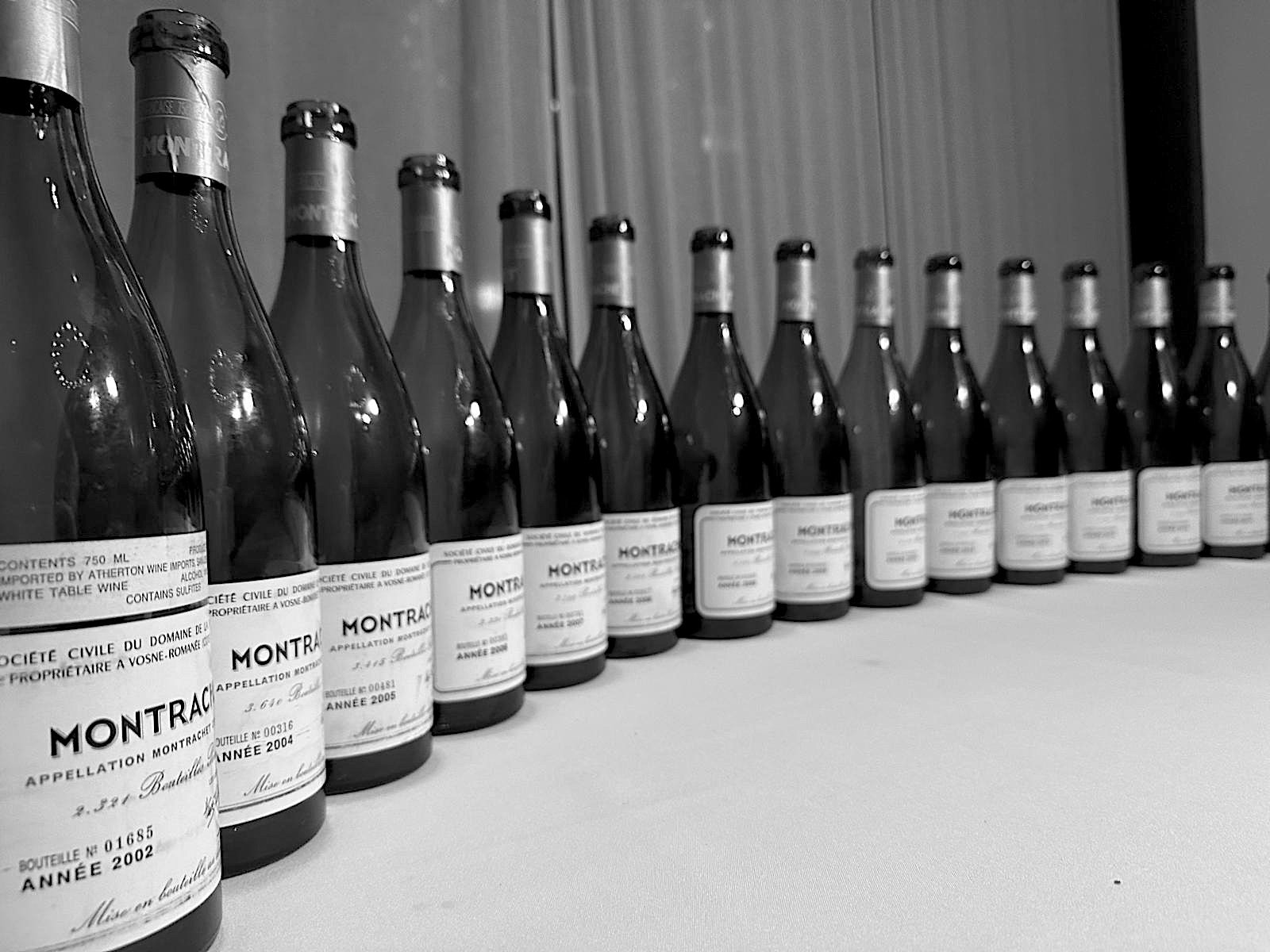DRC Montrachet 2000-2019 tasting
by John Kapon
Recently I had the good fortune of attending a DRC Montrachet tasting in New York City, and even though I started the day in Copenhagen, it was well worth the trip. Hamburger was there to orchestrate, and he provided a lot of tasty tidbits for his eager pupils in advance of the tasting. Edmond Gaudin de Villaine and Jacques Chambon, both descendants of Jacques-Marie Duvault-Blochet, were co-owners of DRC in 1942 when Jacques Chambon wanted to sell his half of the Domaine. To facilitate this, Edmond Gaudin de Villaine incorporated the Domaine into a company, thus allowing Henri Leroy to purchase 50% shares and become co-owner in 1942. It was under Henri Leroy’s direction that the falling pre-phylloxera vines of Romanee Conti were torn up in 1945 and replanted in 1947-48 with the first new vintage in 1952. Henri Leroy was also the one responsible for bringing Montrachet to DRC with the purchase of three parcels on the Chassagne side of the vineyard in 1963, 1965 and 1980.
Read the complite tasting results: https://tastingbook.com/pro/Kapon1
